In get rotation matrix value it contains public static boolean getRotationMatrix (float[] R, float[] I, float[] gravity, float[] geomagnetic)
Here how can i calculate the float[] gravity?
I found a sample of code where it calculate the orientation using both Accelerometer and Magnetic field
boolean success = SensorManager.getRotationMatrix(
matrixR,
matrixI,
valuesAccelerometer,
valuesMagneticField);
if(success){
SensorManager.getOrientation(matrixR, matrixValues);
double azimuth = Math.toDegrees(matrixValues[0]);
double pitch = Math.toDegrees(matrixValues[1]);
double roll = Math.toDegrees(matrixValues[2]);
readingAzimuth.setText("Azimuth: " + String.valueOf(azimuth));
readingPitch.setText("Pitch: " + String.valueOf(pitch));
readingRoll.setText("Roll: "+String.valueOf(roll));
}
My questions are :
- Is orientation value is the rotation matrix value?
- If no then how can i implement this code to get the rotation matrix value using magnetic? field?
To get the rotation matrix i use this code
public void onSensorChanged(SensorEvent sensorEvent) {
if (timestamp != 0) {
final double dT = (sensorEvent.timestamp - timestamp) * NS2S;
double magneticX = sensorEvent.values[0];
double magneticY = sensorEvent.values[1];
double magneticZ = sensorEvent.values[2];
double omegaMagnitude =Math.sqrt(magneticX*magneticX + magneticY*magneticY + magneticZ*magneticZ);
if (omegaMagnitude > EPSILON) {
magneticX /= omegaMagnitude;
magneticY /= omegaMagnitude;
magneticZ /= omegaMagnitude;
}
double thetaOverTwo = omegaMagnitude * dT / 2.0f;
double sinThetaOverTwo =Math.sin(thetaOverTwo);
double cosThetaOverTwo = Math.cos(thetaOverTwo);
deltaRotationVector[0] = (double) (sinThetaOverTwo * magneticX);
deltaRotationVector[1] = (double) (sinThetaOverTwo * magneticY);
deltaRotationVector[2] = (double) (sinThetaOverTwo * magneticZ);
deltaRotationVector[3] = cosThetaOverTwo;
}
double[] deltaRotationMatrix = new double[9];
SensorManager.getRotationMatrixFromVector(deltaRotationMatrix, deltaRotationVector);
}
But the problem is this getRotationMatrixFromVector is says undefine for sensor.Any idea?

 = azimuth (radians)
= azimuth (radians) = pitch (radians)
= pitch (radians) = roll (radians)
= roll (radians)